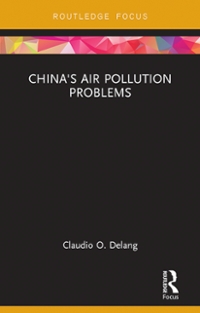1 Investment returns on a given fund are fixed over the next five years at either 4% pa with probability 0.2 or 5% pa with probability 0.8. Calculate the standard deviation of the present value of a payment of 25,000 due to be made from the fund in 5 years' time. 2 A stochastic model of investment returns assumes that the annual rate of return during the next year will be 7.5% and that the rate of return in subsequent years will be at a fixed but unknown level with probabilities in accordance with the following probability distribution: 5.5% with probability 0.3 /= 17.5% with probability 0.5 9.5% with probability 0.2 Calculate the expected accumulated amount at the end of the fifth year of an initial investment of E20,000. 3 A stochastic model of investment returns assumes that the annual rates of return in different years are independent and identically distributed normal random variables with mean 8% and standard deviation 2%. Calculate the mean and standard deviation of the accumulated value, at time 2, of an initial investment of f10,000. 4 An investment analyst wishes to model the annual rate of growth / of an investment fund using a probability distribution of the form: 5% with probability 3k /= $7.5% with probability 1-4k 12.5% with probability k where k is a suitable constant. Determine the maximum and minimum values that can be obtained for the mean and standard deviation of / using this family of distributions..5 An investor intends to invest three lump sums in an investment account, one at the start of each of the next 3 years, and is interested in the amount to which the combined payments will have accumulated by the end of the third year. The amounts of the lump sums are shown in the table below. Calculate the mean and variance of the accumulated amount assuming returns in each year are independent and the mean and standard deviation of the rate of return in each year are as shown in the table: Year Lump sum invested Mean rate of return SD of rate of return 1 $50,000 8% 2% 2 E30,000 7% 3% 3 (20,000 6% 4% .6 The annual returns, /, on a fund are independent and identically distributed, with a mean of 6% style and a standard deviation of 3%. Each year, the distribution of 1+ / is lognormal with parameters u and of (i) Calculate the values of / and o. [4] (ii) Calculate the probability that the accumulation of a single investment of El will be greater than 110% of its expected value after 10 years. [4] [Total 8] 7 E200 is invested for 12 years. In any year the yield on the investment will be 3% with probability 1 style 0.25, 5% with probability 0.6 and 6% with probability 0.15, and is independent of the yield in any other year. Calculate the mean accumulation at the end of 12 years. (2] (ii) Calculate the standard deviation of the accumulation at the end of 12 years. [4] [Total 6].8 In any year, the rate of return on funds invested with a particular company has mean value / and standard deviation s, and is independent of the rates of return in all previous years. style (1) Derive formulae for the mean and the variance of the accumulated value after n years of a single investment of 1 at time 0. [5] (ii) Let it be the rate of return earned in the t th year. Each year the value of (1+ i,) is lognormally distributed, with parameters / =0.04 and o =0.09. (a) Show that n, the number of years that must elapse before the accumulation of a lump sum invested at time 0 has a 75% probability of at least doubling in size, satisfies: 0.040-0.2024vn -In2 =0 (b) Hence calculate the value of n. [7] [Total 12] 9 The annual rates of return on an investment fund are assumed to be independent and identically i style distributed. Each year the distribution of 1+ / is lognormal with parameters / =0.07 and ' =0.006, where / is the annual yield on the fund. Calculate the amount that should be invested in the fund immediately to ensure an accumulated value of at least f500,000 in ten years' time with a probability of 0.99. [6]









